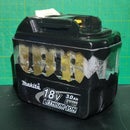Introduction: Detachable Controller Cable Mod
I acquired a non-functional Xbox 360 controller a couple of years ago, and after quickly identifying the cable as being the faulty part, started to strip it apart to find the break. The greatest wear and tear is likely to occur at the outlet of the controller, so I had to cut open the rubber gromit to release the cable. Turns out the break was at the USB plug's end, so I ended up desoldering it from the PCB and making twice as many cuts as necessary.
2 years later, it still works fine, but the re-glued gromit is coming apart again, and the cable insulation has worn through, so it's time for another repair. As I use it on a computer rather than an Xbox, the huge cable is a mess to untangle. I thought it would be a good idea to use a detachable cable that is much shorter; since my phone and tablet both use Micro USB, what better fitting to use than that!?
All that was needed for this project was:
- A cheap micro USB extender
- Small Phillips screwdriver
- Wire strippers
- A soldering iron + Solder
- Glue gun (Optional)
Step 1: Prepare the ΜUSB Cable
Although it would be possible to have the port sit flush against the controller (Like a PS3 controller), I opted to have a short cable protrude from it. The reason was twofold: Firstly, it meant less work (No need to gradually fill the gap with epoxy while having the port sit perfectly at 90°, and secondly, micro usb cables are less suited to being pulled about in their sockets than mini usb, so without a rubber gromit acting as a stress reliever, the port may get damaged over time.
Start by cutting the micro usb extender in half, so the port end has about 7cm of free cable. Strip this down by 1.5 to 2cm and strip off the individual wire's insulation, so there should be just over 5cm of black cable left. Do the same for the other half of the usb extender for later use.
Step 2: Remove the Existing Cable
Disassemble the controller using the Phillips screwdriver so you have the back of the pcb exposed. There is no need to take off the triggers, or disassemble it further than this point.
My cable is a bit of a mess after puttling off the hot glue form my first repair attempt (And because I wasn't quite able to thread it back through the gromit neatly. After desoldering the cables (And making a note of their relative positions), I removed the cable from the gromit. The cable is quite strongly glued/melted onto the gromit, so it may require some cutting, but try to leave at least the last third of the gromit intact.
Cutting it on the rounded side places the cut underneath, so it will be invisible when the controller is held normally. Use fine nosed pliers or tweezers to tear the sxisting insulation out of the gromit. Youll know when it's done because you'll be able to see through all the holes.
Step 3: Attach the New Cable
Insert the micro usb cable.port into the narrow end of the gromit. It may help to wrap the wires in tape first (Or even strip them after this stage). Use general purpose, or hot glue inside the gromit to stop the cable being pulled out. I taped the seam together to try and hold it closed while the glue dried. Ensure the cable is long enough to reach the USB terminals. If it is too long, either re-cut and strip the wires to make them shorter, pull the cable further out of the gromit, or bend the cable to the side and glue it in place to take up the slack.
Although it is easier to do a neater job by soldering the new cable directly to the PCB terminals, having re-soldered them several times in the past left them badly damaged, and difficult to get a good solder joint on. This may have been due to setting the temperature of the iron too high, but if you're not confident about getting it right first time, it may be beneficial to leave some wires coming from the PCB and solder to those instead. If you forget the order of wires, there are plenty of pinout diagrams of the PCB on google.
Step 4: Re-assemble the Controller
It's easiest to re-assemble the controller by gluing the two motors to the bottom half of the plastic shell, and putting all the buttons in upside down so nothing falls out.
You can re-solder the long cable you removed back onto the other half of the micro usb extender. This will give you a really long micro USB cable which you can attach the controller to the computer / Xbox with if you want to game from further away.
I had to take it apart again to remove a loose bit of wire insulation, and somehow ended up tearing one of the copper PCB traces completely out (Hence the lack of a light in the image), although in the 5 minutes I had tested it for, it worked perfectly. The rubber stress relieving gromit smoothly bent to take off any strain on the connector, unlike the Xbox One controllers.













